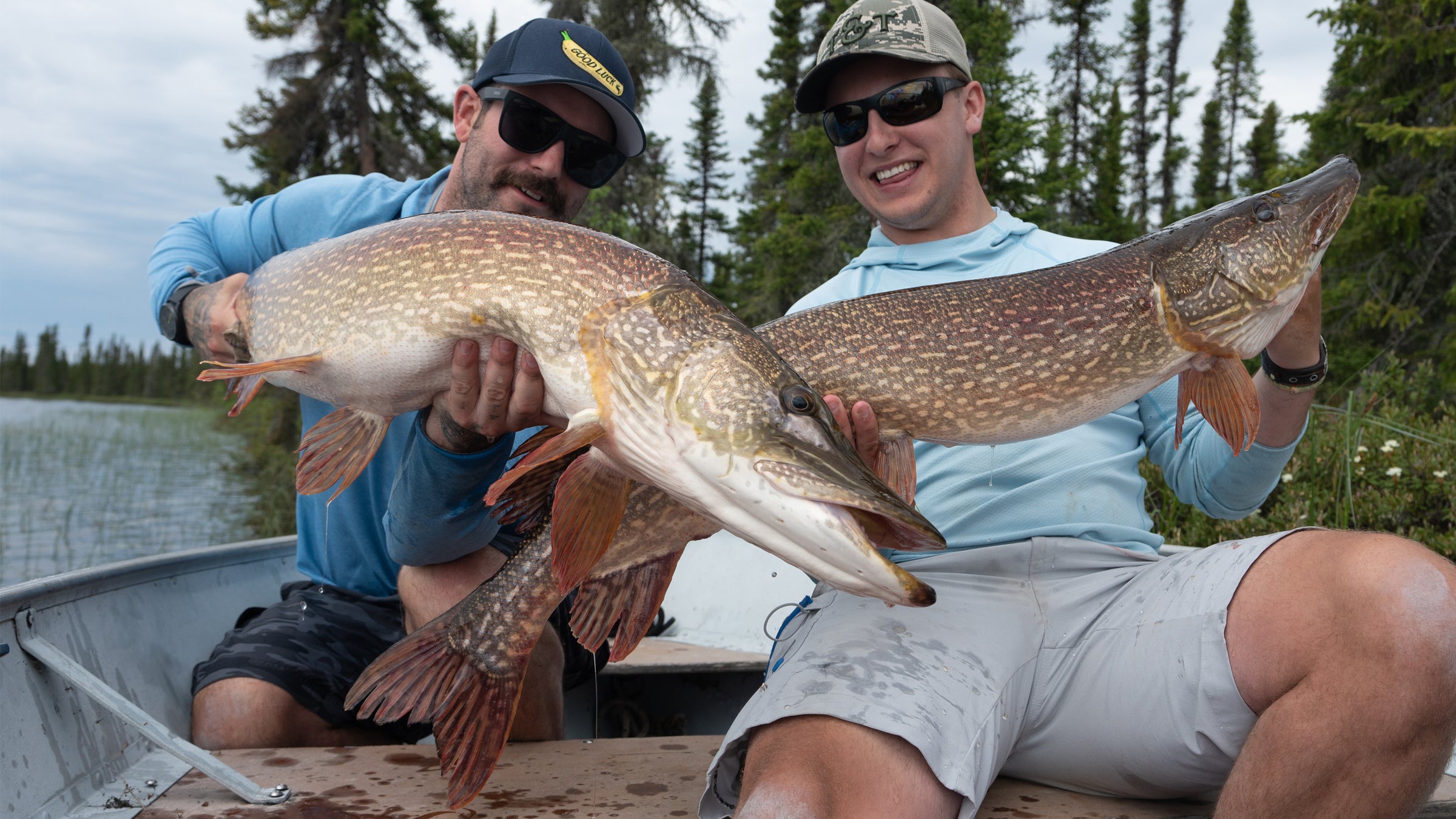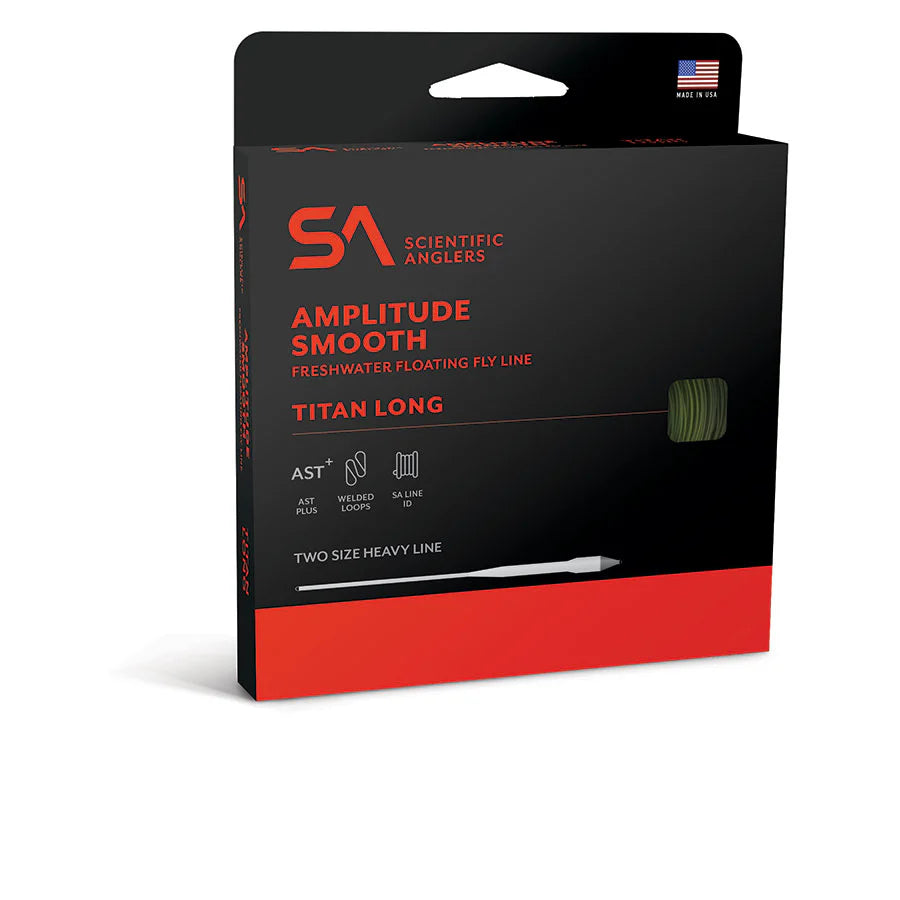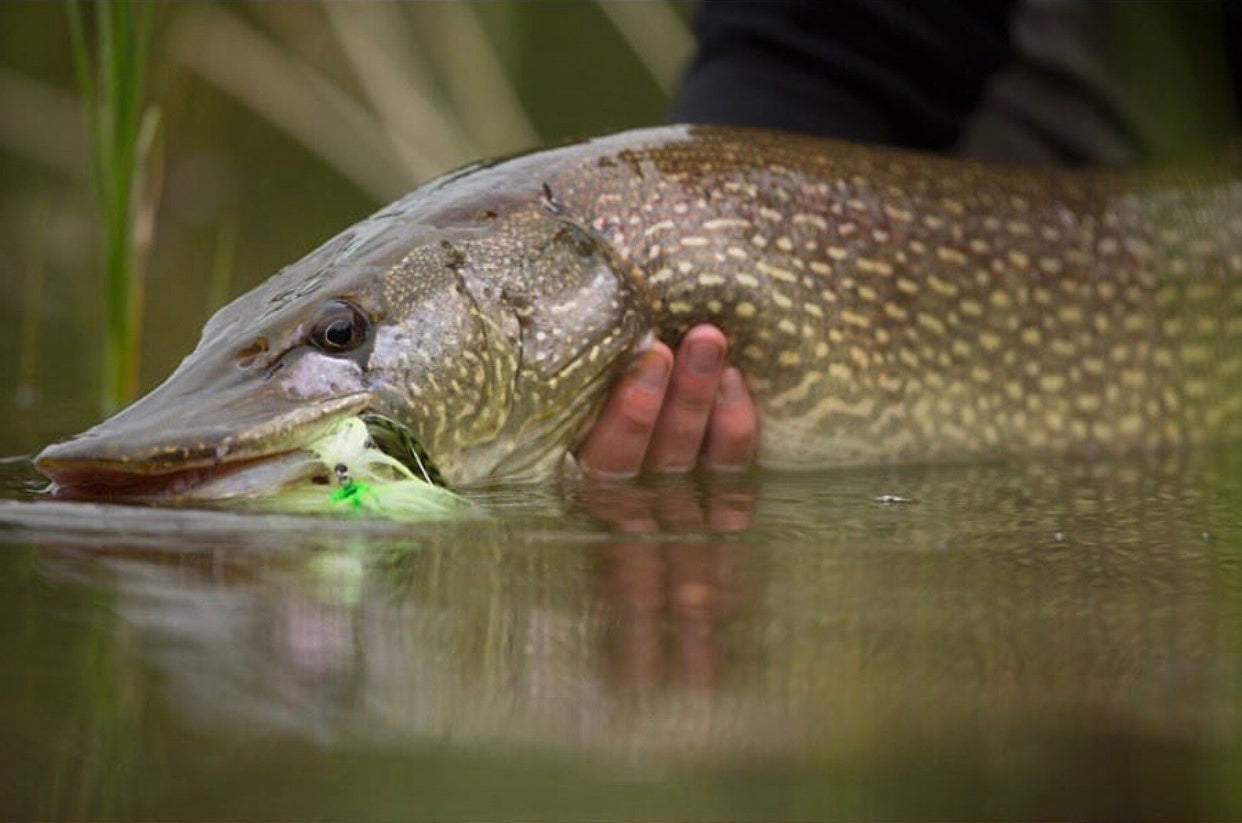
part two
Pike on the Fly Gear Set Up
Fly Line Selection
Part 2: Fly Line Selection
Fifteen years ago good fly lines for pike might've been a difficult thing to find, but now we have so many options its almost more difficult for people to figure out what they need or want. So we'll try and simplify some things for you when it comes to selecting a fly line for pike or musky. We don't have musky in AB, but I love chasing musky out in ON with friends and everything we'll address here on line selection for pike fishing will also apply to musky fishing line selection.
When picking a Fly Line for Pike fishing the first 3 questions we ask anyone coming into the shop are:
- What depth are you fishing?
- How big and how heavy or buoyant are the flies you're fishing?
- What speed are you retrieving your fly?
Most of our fly fishing for pike is done in shallow water, especially during the spring and fall months. Yes, a floating line is your most versatile line that can still keep your fly at an appropriate depth, but floating lines will be harder to turn over big flies. Sink tip and sinking lines have stiffer cores and carry more momentum than a floating line will, so they will turn over and cast very large and bulky flies with more ease than most floating lines.

Floating Lines
Important considerations to keep in mind
If you are looking for a floating line here are some important considerations to keep in mind.
Taper: The bigger and bulkier the flies you're throwing the more aggressive you want the WF (weight forward) taper to be. A line with an aggressive front taper simply means more mass has been put at the front of the fly line to help load the rod quickly and easily, but also to have enough mass to propel large, bulky air resistant flies through the air. An 8wt line designed for trout fishing is not going to cast extremely large, bulky, and air resistant flies as well as a taper designed specifically to help you turn over pike & musky flies the size of small (or medium) birds ;-).
(Pictured is the SA Amplitude Smooth Titan Taper)
You can see how the WF taper has been exaggerated at the front of the head, which will give you more mass as well as stiffness and stability in the line which will help you punch even the biggest most air resistant flies into the unrelenting wind we deal with on a daily basis in Southern Alberta.
Depth: Floating Lines are obviously your number one choice for topwater fishing, but you can easily fish down to 12'-15' with a floating line, which is where 90% of most fly fishing for pike takes place.

Sink Tip Lines
Regulate the depth of your flies
Most people think of sink tips as a way to fish deeper, but when it comes to fly fishing for pike or musky and the big flies we tend to throw, sink tips can be utilized to regulate the depth of your flies. The bigger the fly and more buoyant the materials in it (such as bucktail) the heavier the sink tip you can use. Sink tip lines typically have a much stiffer core than floating lines, which will help you turn over bigger flies. Here's a couple factors to keep in mind when you're looking at sink tips:
Length:
- Short Sink Tips (like the Orvis Bank Shot or SA Sonar Titan) are great for either shallow water or just trying to make sure that more buoyant flies stay below the surface during your retrieve.
- Longer Sink Tips (like the Orvis Pro Depth Charge) are good for fishing deeper water, but more importantly they'll allow you to fish bigger more buoyant down. They'll also allow you to fish other flies with a faster retrieve without having the fly come up in the water column. If you've got a weed covered bottom, or debris to deal with you can fish a floating fly on a long and heavy sinktip. Running a 3' leader will let your floating fly float & hover above the bottom so it doesn't get hung up in the weeds. When you strip your fly it will look like the prey is diving into the weeds to hide from the pike coming to eat it (as natural prey would do).

Full Sinking Lines
Fish deep and fast
If you're needing to get big bulky flies down, or fishing deeper drop-offs and ledges, or you want to strip fast and aggressively while needing your fly to stay down, than a full sinking line can be the ticket. Even if your trying to slowly crawl your fly across the bottom in deeper water, these fly lines will give you the best straight line connectivity to your fly, allowing you to detect the most subtle takes. This can be especially beneficial in cold water scenarios, like early and late season pike or musky fishing.
Their stiff cores and aggressive taper along with the advent of Triple density lines have created much more effective fishing fly lines. Triple density lines mean that the further from the fly you get the lighter the density of the sinktip, which avoids the issues with hinging on regular sink tips, and the uneven sink rate you could run into on normal full sinking lines that leave you with bowing in your line and a loss in straight line connectivity to your fly.
Here are our top Triple Density Fly Lines for Pike or Musky Fishing:
One of the most common questions I get is, "well what line do you use?" The answer to that is....basically all of these. All year I've been fishing with 5 rods strung up in the boat from 8wt-11wt based on the size of the flies I've throwing:
- Floating Line for the skinniest water and smallest profile flies (#9 Titan Taper)
- Intermediate Line for most depths 2'-5' and flies that aren't very buoyant (#9)
- Bank Shot Sink Tip #8 (fast sinking short head for getting buoyant flies down in 2'-8' of water)
- Orvis Depth Charge 350gr for deeper water (5'-10') and more buoyant flies. The heavier sink tip will also allow you to fish some of your more buoyant flies much slower than you'd be able to with a floating or intermediate lines (#10)
- Orvis Depth Charge 550gr for water 6-12' and the largest most buoyant flies. Giant flies with a lot of bucktail tend to be extremely buoyant and a much heavier sink tip will allow you to get them down and will also allow you to strip faster, while keeping your fly down.
If you have any other questions on fly line selection we haven't covered here be sure to swing by the shop and we'd be happy to chat in more detail.









